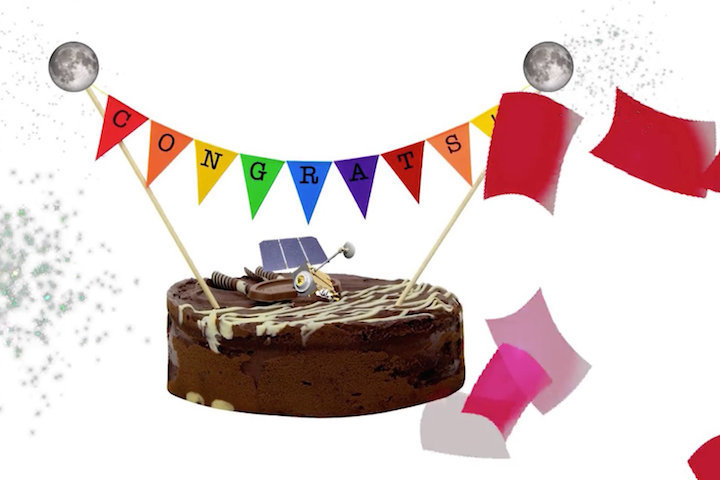A lunar day is a lot longer than a day on Earth, according to a new NASA video. We measure days from noon to noon or sunset to sunset. On Earth, a day takes 24 hours, though it will vary by a up to 29 seconds because of the eccentricity of Earth's orbit. On the moon, a day is 708.7 hours, or 29.53 Earth days. On Oct. 16, the probe hit the 100 lunar-day mark.

That day length is about the same amount of time it takes for the moon to make a complete revolution around the Earth, and that's no accident. The moon is tidally locked to the Earth, and always presents the same face to us. So its rotation period and orbital period are the same.
The Earth's orbital and rotation periods are of course very different, with our planet making one rotation in 24 hours, but completing one orbit in a year. Since the Earth moves around the sun in a roughly circular orbit, when one rotation is finished the sun will appear slightly west of its position in the sky at the same time the day before. The Earth also wobbles a bit, which alters the length of a day by a small amount.
A similar thing happens to the moon. The 100 days LRO passed are mean solar days — an average. The length of a day on the moon can vary, being 6 hours shorter or up to 7 hours longer than the mean of 28.53 Earth days, for the same reasons that the Earth's day can vary, plus one other: The moon's orbit is not a perfect circle. The moon also wobbles a bit from side to side (a phenomenon called libration), so from Earth a sliver of the far side is periodically visible.
Launched on June 18, 2009, LRO was originally planned to last about a year. It has been extended numerous times since then. The probe orbits between 12 miles (20 kilometers) and 103 miles (165 km) above the lunar surface, investigating the lunar topography and radiation environment, keeping an eye out for water.
Quelle: SC
